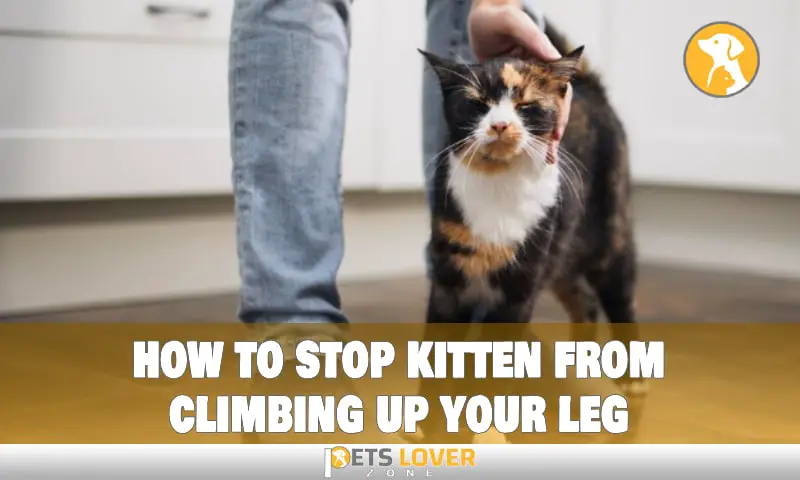To keep cats out of cabinets, place double-sided tape on the edges, use baby locks, or apply repellent sprays. Cats are curious creatures and love to explore, which often leads them into places they shouldn’t go, like cabinets.
While it may seem harmless, cats can get into hazardous situations or make a mess if they access food or cleaning supplies. If you’re tired of constantly shooing your feline friends away, there are a few simple ways to keep them out of the cabinets.
From double-sided tape to baby locks, this article will explore various methods to deter curious kitties. Keep reading to learn about safe, effective, and humane ways to keep your cabinets cat-free!
The Importance Of Keeping Cabinets Secure To Prevent Harm To Cats
Cats are natural explorers. They love sniffing out corners and curling up in cozy spaces. This often leads them to get stuck inside cupboards and cabinets. These small spaces may seem like harmless hideouts, but they can quickly become dangerous for our furry friends.
Therefore, it’s essential to keep the cabinets secure to prevent harm to cats.
Here are some reasons why keeping cabinets secure is crucial:
- Cabinets may contain poisonous items such as cleaning supplies, medicine, or chemicals, which can be harmful to your cat’s health.
- A cabinet door can close on a cat’s tail or paw while they’re inside, causing them to panic and injure themselves while trying to escape.
- Cats can easily get trapped inside cabinets, and their cries for help may go unheard, leading to severe harm.
Taking preventative measures to secure cabinets is crucial to keeping your cat safe.
Why Cats Need To Be Kept Out Of Cabinets In Households With Children
Cabinets pose a serious threat to cats in households with children. Children may unintentionally harm cats by:
- Slamming cabinet doors shut while the cat is inside
- Pulling out the cat’s tail or paw to get their attention
- Mishandling cats while trying to get them out of tight spaces
Furthermore, certain household items, like sharp utensils or glassware, may fall out of cabinets and harm both cats and children.
Therefore, taking precautions to keep cats and cabinets separate in households with children is critical. This keeps both the cats and children safe.
To sum it up, securing cabinets is important for a cat’s overall well-being. Keeping cabinets locked or adding safety latches can prevent harm and provide peace of mind for cat owners. In households with children, taking preventative measures can ensure the safety of both cats and children.
Understanding The Behavior Of Cats And Their Fascination With Cabinets
Cats are known to be curious creatures, and this trait often leads them to explore their surroundings, including cabinets. Understanding this behavior is essential to keeping our feline friends safe and preventing them from getting into places where they don’t belong.
Here are the key points to consider:
Cats are attracted to cabinets for several reasons. Here are the factors that make them so appealing:
- Enclosed space: Cabinets often provide a small, enclosed space that makes cats feel secure and protected.
- Height: Cats are natural climbers and enjoy being up high, which is why they might want to explore high shelves or upper cabinets.
- Scent: Cats have a keen sense of smell and might be drawn to the scent of food or other interesting smells emanating from a cabinet.
- Playfulness: Cats love to play and explore, and cabinets offer new and exciting places for them to play and hide.
While cabinets may seem like a fun and exciting place for cats to explore, they can also pose some serious safety concerns. Here are the key safety issues to keep in mind:
- Poisonous substances: If you store cleaning supplies or other toxic substances in your cabinets, your cat could accidentally ingest them, leading to serious health issues.
- Sharp objects: Knives or other sharp objects can easily fall out of cabinets and harm your cat.
- Trapped: Cats could get trapped in a cabinet and become injured or even suffocate.
- Broken items: Cats are naturally curious and playful, and they might accidentally knock over items or break something inside the cabinet.
- Unwanted guests: Cabinets can provide a hiding place for other pests that may be harmful or carry diseases.
If you observe your cat’s behavior, you can determine whether they are at risk of getting into cabinets. Here are some tips to help you understand your cat’s behavior:
- Observe: Watch your cat’s behavior. If they seem more curious than usual or if they’re spending too much time around the cabinets, it could be a sign that they’re interested in exploring them.
- Distract: Provide your cat with an alternative distraction. You can provide other enclosed spaces, high shelves, or active playtime to distract them from the cabinets.
- Blockade: You can keep your cabinets closed or install childproof locks to prevent your cat from getting into them.
- Remove hazards: Store your items safely and keep toxic substances or sharp objects out of reach.
- Train: You can train your cat to avoid the cabinets using positive reinforcement techniques, such as rewarding them when they do not attempt to get into the cabinets.
Keeping your cats safe involves understanding their behavior and taking measures to ensure they don’t get into harmful situations. Use these tips to keep your curious cat safe, sound, and out of your cabinets.
Tips And Tricks For Keeping Cats Out Of Cabinets

We all love our feline friends, but when they start raiding our cabinets, things can get messy. Fortunately, there are some practical solutions to this problem. Here are some tips and tricks to keep cats out of your cabinets:
Practical Solutions For Keeping Cats Out Of Cabinets
- Training: Train your cat to stay out of the cabinets by giving them a deterrent, such as a spray bottle with water. Whenever your cat goes near the cabinets, spray some water on them. They’ll soon learn that the cabinets are off-limits.
- Repelling scents: Cats don’t like certain smells, including citrus, lavender, and eucalyptus. Use essential oils or sprays containing these scents on or around your cabinets to repel your cat.
- Furniture rearrangement: Keep your cabinets inaccessible by rearranging your furniture or adding barriers, such as baby gates or covers, to the cabinet handles to keep the cats from opening them.
Discuss How To Childproof The Cabinets So That Children Can’t Accidentally Let The Cat In
While we want to keep our cabinets out of feline reach, we also need to keep them inaccessible to kids. Here are some tips to help childproof your cabinets:
- Locks: Use child safety locks on your cabinets. These locks will prevent your child from accidentally opening the cabinets, and also keep the feline out of reach.
- Distraction: Toys, games, and other items can quickly divert young children. Keep them busy elsewhere, away from the cabinets.
- Supervision: Keep a watchful eye on your children and ensure they do not play with or open the cabinets in your absence.
How To Make Cabinets Unattractive For Cats
To stop the cats from even trying to get into your cabinets, you can make them unattractive to your feline friend by following these steps:
- Placement of cat food: Place cat food in an alternative location away from the cabinets. This will discourage them from jumping or climbing into the cabinets.
- Cat toys: Provide your cats with plenty of toys and activities to play with. This will keep them entertained, so they’ll be less likely to explore the cabinets.
By following these tips, you can keep your curious cats out of your cabinets and ensure that they remain in pristine condition. Remember, it takes patience, consistency, and effort, but it’s worth it to have a happy home.
When To Seek Professional Help

While there are a lot of tips and tricks to keep cats out of cabinets, some situations may require professional help. Here are some scenarios where calling in a professional can be the best course of action to keep your cats safe and your cabinets secure.
Emergency Scenarios That Call For Professional Assistance
- If your cat gets trapped inside a cabinet, do not try to force the cabinet open yourself. This could harm your cat or damage your cabinet. Call in a professional to safely and effectively free your cat from the cabinet.
- If your cat has a history of getting into cabinets and has been injured as a result, it may be time to seek professional help. A cat behaviorist can help you understand why your cat is behaving this way and provide solutions to modify that behavior.
- If your cat has ingested something harmful, such as cleaning products stored in a cabinet, seek veterinary assistance immediately. It is important to act fast to prevent further harm to your cat.
- If you have tried various methods to keep your cat out of cabinets and none have been successful, it may be time to call in a professional. A cat behaviorist or trainer can assess your situation and provide customized solutions to effectively keep your cat out of cabinets.
Remember, your cat’s safety should always come first. If you are unsure about how to safely and effectively keep your cat out of cabinets, do not hesitate to seek professional assistance.
FAQs
How Do I Keep Cats Out Of Cabinets?
You can try using deterrents like double-sided tape or aluminum foil, or use childproof locks on cabinet doors.
Why Do Cats Like To Hide In Cabinets?
Cats are naturally curious and love to explore small, enclosed spaces like cabinets.
Is It Harmful For Cats To Be In Cabinets?
It depends on the contents of the cabinet. If there are dangerous chemicals or sharp objects, it can be harmful.
Conclusion
As a cat owner, it can be frustrating to constantly find your feline friends sneaking their way into your cabinets. However, with a few simple steps and preventative measures, you can successfully keep cats out of cabinets. From installing child safety locks to creating designated climbing and hiding spaces for your cats, there are many effective solutions to this common problem.
It’s important to remember that it may take time and patience to train your cats to stay away from cabinets, but with consistency and attention, it can be done. By incorporating these tips and tricks into your everyday routine, you can provide a safe and happy environment for both you and your furry companions.
With a little effort, you can enjoy your cabinets without the fear of curious cats knocking over your belongings or ingesting harmful materials.






